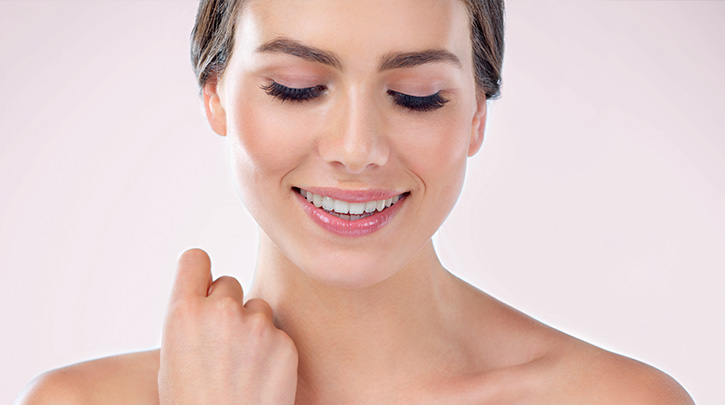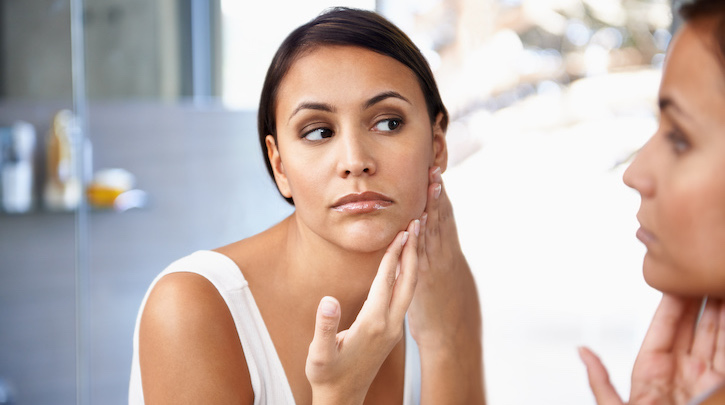
- Global
Get non-surgical solutions for today's top aesthetic concerns with Venus Treatments. Join thousands of satisfied patients worldwide!
- Loading...
- All Regions
Get non-surgical solutions for today's top aesthetic concerns with Venus Treatments. Join thousands of satisfied patients worldwide!

Did you know that we will all develop at least one scar in our lifetime? That’s a fact, according to the American Academy of Dermatology. While some might feel one scar is no big deal, many of us may experience increased distress and negative social impacts due to more visible scars. This psychological effect on one’s self-esteem can have an impact on multiple areas of our lives and seeking a treatment that actually reduces the appearance of scars can become all-consuming. Here, we share our top tips on effectively reducing the appearance of unwanted scars faster and safer than alternative treatment methods.
While natural scar reduction remedies may be cost-effective and tout a positive anecdotal track record, there is no scientific evidence that proves these remedies work. This is because they often tend to only have an effect on the skin’s surface, while scars are rooted deeper in the dermis. When your skin is injured, it naturally reacts by launching into repair mode. For deeper injuries, skin kickstarts its natural production cycle of collagen, a protein that serves as one of the basic building blocks for healthy skin, to pull the dermis back together. But sometimes, skin can overcompensate for the damage and produce too much collagen. The result is thicker, less flexible skin—or a scar. While it’s possible scars may fade over time, there’s no guarantee. To repair skin faster and much more effectively than natural remedies, try these top tips.
Often prescribed post-surgery to aid in the proper healing of skin and to avoid potential scarring, silicone sheets and gels protect vulnerable skin, increasing hydration and leveling out the expression of growth factors to better balance collagen production and prevent scarring. Best used on fresh scars, the effects of silicone therapy are well documented in authoritative studies and journals and is considered the first line of treatment for scarring.
In another study, glycolic acid peels were proven to reduce the appearance of acne scars, particularly atrophic, or pitted, acne scars. Acne scarring occurs when inflammation damages collagen long-term, resulting in textural changes to the affected skin. A chemical peel made with glycolic acid is applied to clean skin and left on for a few minutes before being neutralized and washed off. The treatment creates mild superficial injuries to skin’s surface or the dermis of the skin, depending on concentration level, which spurs skin’s natural healing cycle. Peels with stronger concentrations (up to 70%), or “deep peels,” completed by a certified treatment professional are much more likely to offer quicker, more visible results and skin care benefits as compared to lower-strength (8-15% concentration) drugstore peels, but will likely come with more downtime and possibly even blistering, particularly for sensitive skin. The overall result is smoother, more even-toned skin and reduced acne scarring. However, skin will be extra sensitive following treatment, particularly to UV light, so avoid sunlight immediately post-treatment and remember your SPF moving forward.
Dermabrasion is an effective treatment for scars that concern uneven skin texture, particularly raised scars. Differing from microdermabrasion, which exfoliates skin and removes dead skin cells, dermabrasion is performed with a motorized brush that wears down scar tissue by removing several layers of skin cells in a controlled manner for quick and effective results. The procedure also encourages healthy skin cell renewal in the treatment area to promote smoother, healthier skin following the conclusion of your treatment plan. It should be noted that dermabrasion may be effective, but it could impact your schedule for up to eight weeks as your skin recovers.
Another option for reducing the appearance of scars or stretch marks, radio frequency-based skin resurfacing treatments utilize tiny pins attached to an applicator that create micro-dermal wounds in the skin’s surface, through which heat, via radio frequency energy, is delivered deep into the dermis. The result is an increase in collagen and elastin production and faster, more noticeable results in scar reduction via an improvement in skin texture and tone. Because the wounds are so small, downtime is very minimal—you can resume your regular skin care and makeup routine after only 24 hours.
If you’re ready to start working toward gaining faster, more effective results in reducing the appearance of unwanted scars, it’s important to know the facts about skin resurfacing treatments before making a commitment. For the most accurate information and a customized recommendation based on your aesthetic goals, skin type and tone, and scar type, locate a certified treatment provider near you using the search field below.
Find a certified Venus Treatments provider near you today who specializes in today’s top aesthetic medical solutions.



Search below to find a provider near you and to learn about our non-surgical aesthetic treatments with ARTAS®, NeoGraft®, Venus Bliss™, Venus Blilss MAX™, Venus Versa™, Venus Legacy™ Venus Versa™ Pro, Venus Velocity™, Venus Viva™ MD, and Venus Glow™.
For more information call: (888) 907-0115 // [email protected] // 235 Yorkland Blvd., Suite 900, Toronto, ON, M2J 4Y8 Canada
REGULATORY CLEARANCES [ More ]
Venus Bliss™ is cleared by the FDA and licensed by Health Canada for non-invasive lipolysis of the abdomen and flanks in individuals with a Body Mass Index (BMI) of 30 or less, with the diode laser applicators. The (MP)2 applicator is cleared by the FDA for temporary reduction in the appearance of cellulite, and licensed by Health Canada for temporary increase of skin tightening, temporary circumferential reduction, and temporary cellulite reduction. Venus Bliss™ has CE Mark as a non-invasive medical aesthetic device enabling a comprehensive approach leading to body contouring, addressing fat reduction, skin tightening, circumference reduction, and cellulite reduction.
Venus Versa™ is cleared by the FDA, licensed by Health Canada, and has CE Mark as a multi-application device intended to be used in aesthetic and cosmetic procedures. The SR515 and SR580 applicators are cleared by the FDA, licensed by Health Canada, and have CE Mark for the treatment of benign pigmented epidermal and cutaneous lesions and treatment of benign cutaneous vascular lesions. The HR650/HR650XL and HR690/HR690XL applicators are cleared by the FDA, licensed by Health Canada, and have CE Mark for the removal of unwanted hair and to effect stable long-term or permanent hair reduction for Fitzpatrick skin types I-IV. The AC Dual applicator is cleared by the FDA, licensed by Health Canada, and has CE Mark for the treatment of acne vulgaris. The DiamondPolar™ and OctiPolar™ applicators on the Venus Versa™ system are cleared by the FDA for non-invasive treatment of moderate to severe facial wrinkles and rhytides on females with Fitzpatrick skin types I-IV. The DiamondPolar™ applicator is licensed by Health Canada and has CE Mark for non-invasive treatment of moderate to severe facial wrinkles and rhytides on females with Fitzpatrick skin types I-IV. The OctiPolar™ applicator on the Venus Versa™ system is licensed by Health Canada and has CE Mark for temporary body contouring via skin tightening, circumferential reduction, and cellulite reduction. The NanoFractional RF™ (Viva) applicator is cleared by the FDA, licensed by Health Canada, and has CE Mark for dermatological procedures requiring ablation and resurfacing of the skin.
NeoGraft® is cleared by the FDA, licensed by Health Canada and has CE Mark with indication for use in suction-assisted follicular extraction and re-implantation. It is an auto-graft system and can be used on both male and female patients.
ARTAS iX™ is cleared by the FDA, licensed by Health Canada and has CE Mark with indication for use for harvesting hair follicles from the scalp in men diagnosed with androgenic alopecia (male pattern hair loss) who have black or brown straight hair. ARTAS iX™ is intended to assist physicians in identifying and extracting hair follicular units from the scalp during hair transplantation; creating recipient sites; and implanting harvested hair follicles.
Venus Legacy™ is cleared by the FDA for the non-invasive treatment of moderate to severe facial wrinkles and rhytides in females with Fitzpatrick skin types I-IV with the OctiPolar™ and DiamondPolar™ applicators, and temporary reduction in the appearance of cellulite with the 4D Body (LB2) and 4D Face (LF2) applicators. It is licensed by Health Canada and has CE Mark for the temporary increase of skin tightening, temporary circumferential reduction, temporary cellulite reduction, and temporary wrinkle reduction.
Venus Velocity™ is cleared by the FDA, licensed by Health Canada and has CE Mark for hair removal, permanent hair reduction (defined as the long-term stable reduction in the number of hairs re-growing when measured at 6, 9 and 12 months after the completion of a treatment regimen), and the treatment of pseudofolliculitis barbae for all Fitzpatrick skin types.
Venus Fiore™ received regulatory approval in Israel for aesthetic and functional treatment of the vagina, labia and mons pubis. Venus Fiore™ is available for sale in India, Hong Kong, and other selected Asian countries.
Venus Viva™ is cleared by the FDA, licensed by Health Canada, and has CE Mark for dermatological procedures requiring ablation and resurfacing of the skin. The DiamondPolar™ applicator is cleared by the FDA, licensed by Health Canada and has CE Mark for the treatment of moderate to severe wrinkles and rhytides in Fitzpatrick skin types I-IV.
Venus Freeze Plus™ is cleared by the FDA for the non-invasive treatment of moderate to severe facial wrinkles and rhytides in females with Fitzpatrick skin types I-IV. It is licensed by Health Canada for temporary skin tightening, and temporary reduction in the appearance of cellulite on the abdomen and flanks, using the DiamondPolar™ and OctiPolar™ applicators. The DiamondPolar™ applicator on Venus Freeze Plus™ has CE Mark for the non-invasive treatment of moderate to severe facial wrinkles and rhytides, and the increase of skin tightening, temporary circumferential reduction, and cellulite reduction with the OctiPolar™ applicator.
Venus Heal™ is licensed by Health Canada and can be used for the treatment of both acute and chronic disorders of the musculoskeletal system, such as muscle spasms, back pain, and soft tissue injuries, and results in effects such as pain relief, myorelaxation, increase of local blood circulation, and edema reduction. In the U.S., Venus Heal™ is cleared by the FDA for the relief of minor muscle aches and pain, relief of muscle spasm, and temporary improvement of local blood circulation. These indications enable the treatment of certain soft tissue injuries and conditions.
Venus Glow™ is cleared by the FDA as a Class I motorized dermabrasion device. It provides a dermal rejuvenation treatment that works to open up and deep-clean pores. Venus Concept is the exclusive distributor for Venus Glow™.
Venus Epileve™ is licensed by Health Canada and has CE Mark for hair removal, permanent hair reduction (defined as the long-term stable reduction in the number of hairs re-growing when measured at 6, 9 and 12 months after the completion of a treatment regimen), and the treatment of pseudofolliculitis barbae for all Fitzpatrick skin types. Venus Epileve™ is also CE-Marked for hirsutism.
Venus Freeze™ is cleared by the FDA for the non-invasive treatment of moderate to severe facial wrinkles and rhytides in females with Fitzpatrick skin types I-IV. It is licensed by Health Canada for temporary skin tightening, and temporary reduction in the appearance of cellulite on the abdomen and flanks, using the DiamondPolar™ and OctiPolar™ applicators. The DiamondPolar™ applicator on Venus Freeze™ has CE Mark for the non-invasive treatment of moderate to severe facial wrinkles and rhytides, and the increase of skin tightening, temporary circumferential reduction, and cellulite reduction with the OctiPolar™ applicator.
Venus Swan™ is cleared by the FDA for the non-invasive treatment of moderate to severe facial wrinkles and rhytides, and licensed by Health Canada for the non-invasive treatment of cellulite reduction, skin tightening, and temporary reduction in the appearance of stretch marks.
Copyright © 2024 Venus Concept. All rights reserved.
You are entering our website. For other countries/regions and language options, please click the SELECT A DIFFERENT REGION button below.
SELECT A DIFFERENT REGIONAre you looking to get a treatment? Please visit our patient website to learn more.
Click HereUnsure which aesthetic treatment is right for you? Take this quick and easy quiz to discover treatments that suit your needs.
Get Started